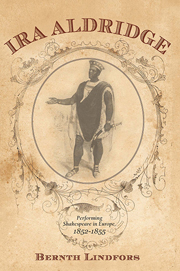Book contents
- Frontmatter
- Contents
- List of Illustrations
- Acknowledgments
- Abbreviations
- Introduction
- 1 Making Up a Company
- 2 Brussels
- 3 Navigating up the Rhine
- 4 Moving into the Interior
- 5 Berlin
- 6 On to Vienna
- 7 Hungarian Rhapsodies
- 8 Comparisons and Contrasts
- 9 Personal and Personnel Matters
- 10 Hungarian Rap Sheet
- 11 Prussia, Germany, Switzerland
- 12 Homeward Bound
- 13 Interpreting Shakespeare
- 14 Further Travels
- Appendixes
- Notes
- Selected Bibliography
- Index
- Miscellaneous Endmatter
13 - Interpreting Shakespeare
Published online by Cambridge University Press: 05 December 2013
- Frontmatter
- Contents
- List of Illustrations
- Acknowledgments
- Abbreviations
- Introduction
- 1 Making Up a Company
- 2 Brussels
- 3 Navigating up the Rhine
- 4 Moving into the Interior
- 5 Berlin
- 6 On to Vienna
- 7 Hungarian Rhapsodies
- 8 Comparisons and Contrasts
- 9 Personal and Personnel Matters
- 10 Hungarian Rap Sheet
- 11 Prussia, Germany, Switzerland
- 12 Homeward Bound
- 13 Interpreting Shakespeare
- 14 Further Travels
- Appendixes
- Notes
- Selected Bibliography
- Index
- Miscellaneous Endmatter
Summary
Othello
Othello was Aldridge's most important role. In the thirty-three months he toured the Continent, he played this character more than 150 times. Othello was the means by which he introduced himself to each new community he entered, not only impressing them with his skills as an actor but also fascinating them with his claim to be a native-born African. In truth, he was playing a role by playing a role, giving his color and ethnicity a more exotic tint. This charade paid off by drawing crowds to the theater, but, more important, it gave Aldridge an opportunity to portray Othello in a new way. By dressing in borrowed robes, he racialized the image of the passionate Moor, investing him with characteristics that were thought to be authentically indigenous.
We have already seen how audiences responded to this bold invention. Most were thrilled to witness the extreme emotionalism of an Africanized Othello. They felt that no European actor could match the intensity of his ardor, first in loving Desdemona so deeply and then in killing her, believing she had betrayed him. Those who objected to the way Othello was represented did so on aesthetic grounds, asserting that his rage and displays of unbridled irrationalism were too ugly to be construed as noble, manly, or heroic. There was nothing redeeming or uplifting about them.
- Type
- Chapter
- Information
- Ira AldridgePerforming Shakespeare in Europe, 1852-1855, pp. 225 - 247Publisher: Boydell & BrewerPrint publication year: 2013



